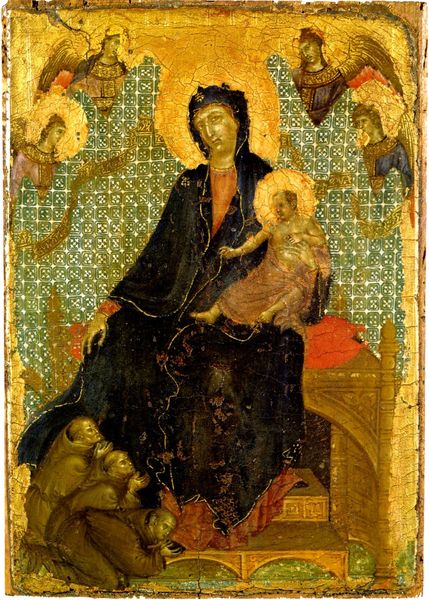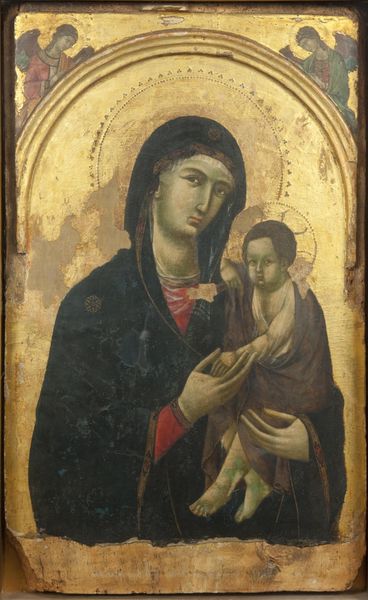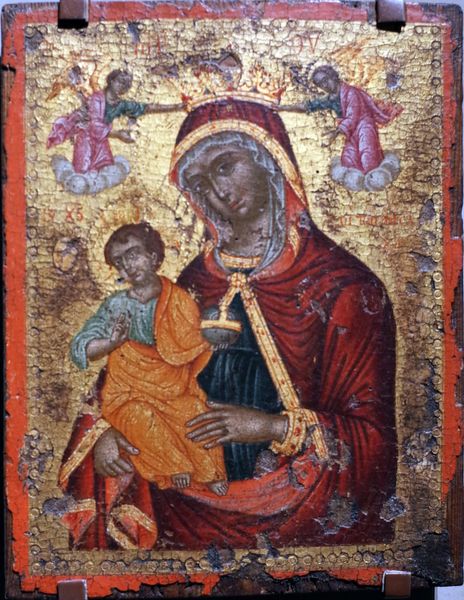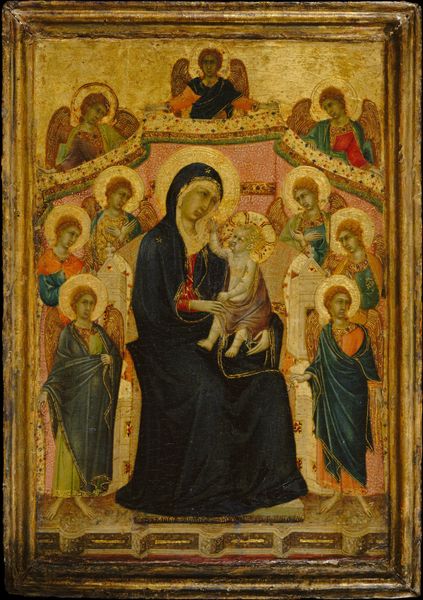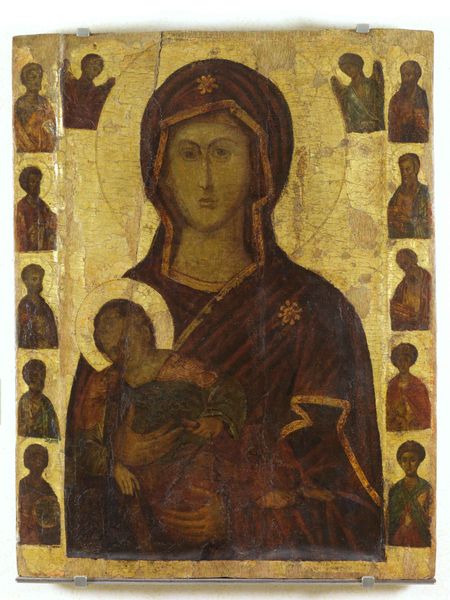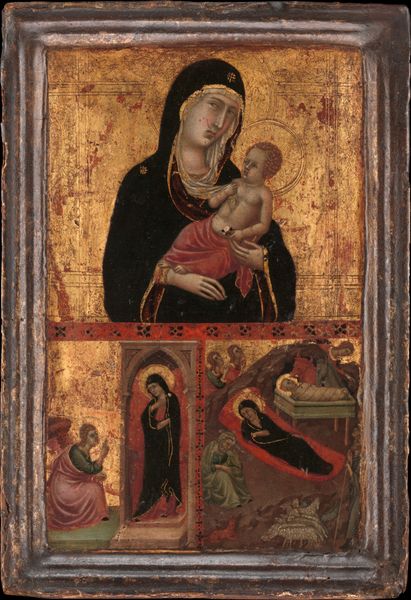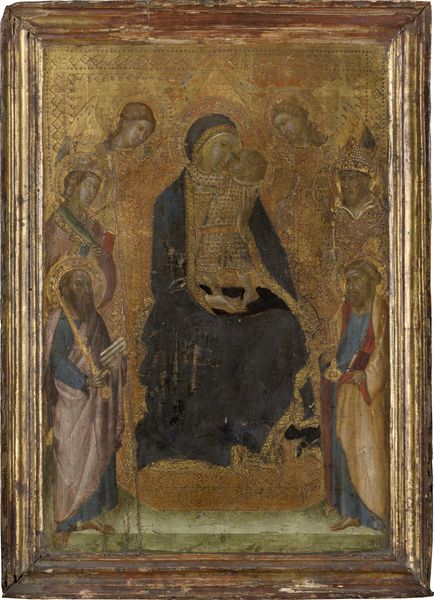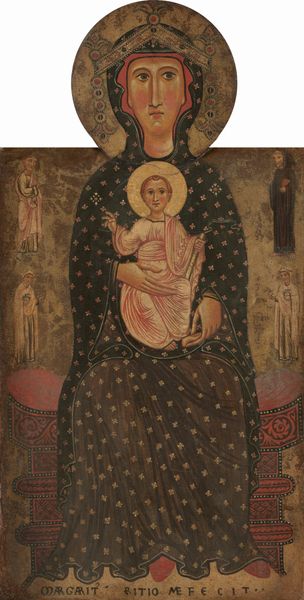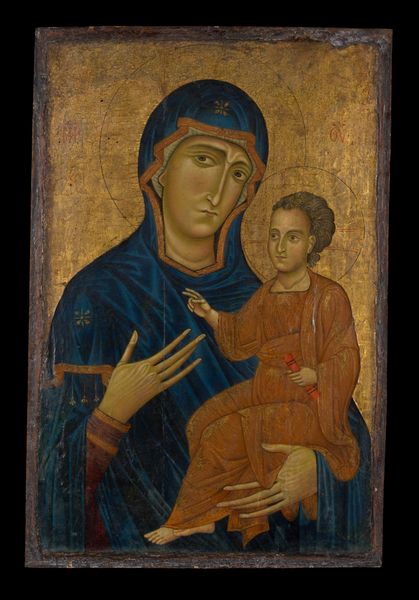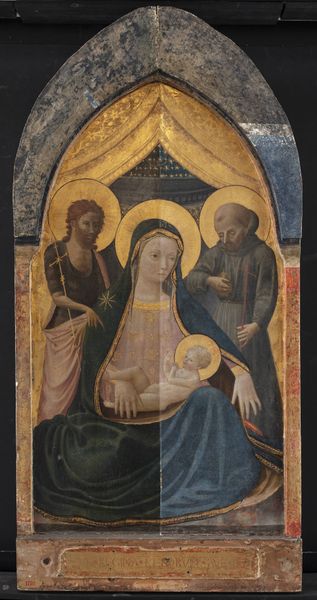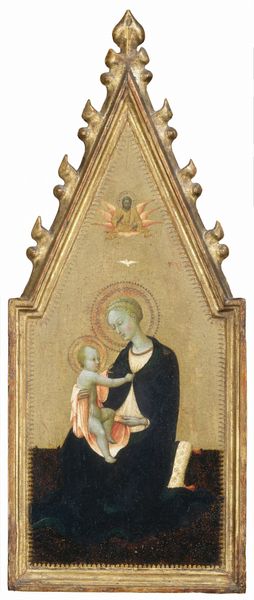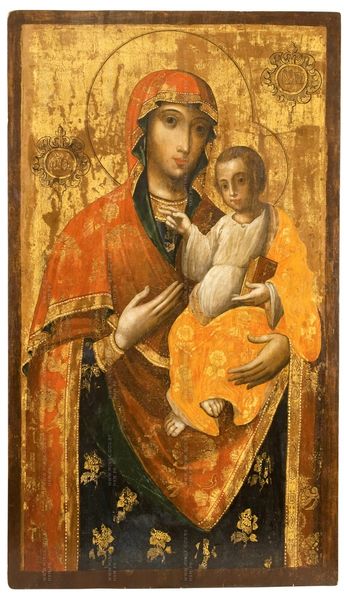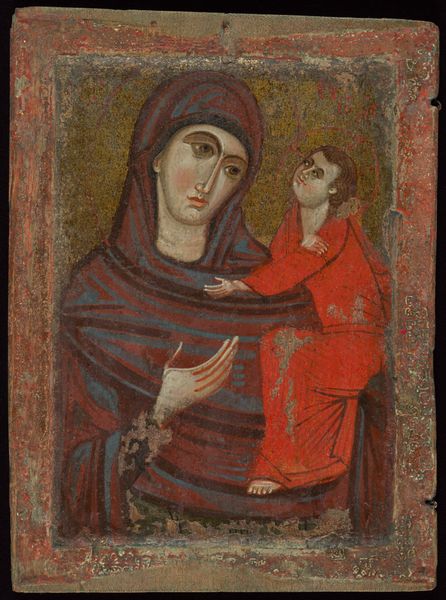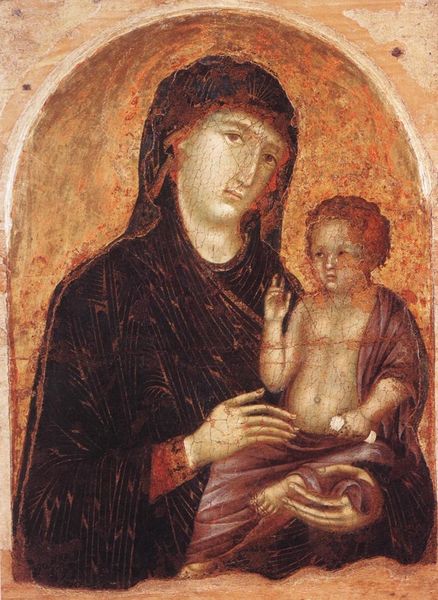
tempera, painting
#
portrait
#
byzantine-art
#
medieval
#
tempera
#
painting
#
figuration
#
history-painting
Copyright: Orthodox Icons,Fair Use
Editor: This is a left panel of a diptych titled *Madonna and Child Enthroned*, made around 1280 using tempera. It's quite striking in its formality. What can you tell me about how to interpret its symbolism within its historical context? Curator: Looking at this piece, one immediately recognizes the Byzantine influence. How do you see its formal style serving power dynamics in the Medieval period? Editor: I see what you mean. It feels almost authoritarian. There's a real sense of divine right portrayed through the unyielding gazes and flattened perspective. The piece doesn't feel as warm as other mother-child renditions I've seen. Curator: Exactly. It’s vital to recognize how the Byzantine style wasn't simply about aesthetics; it was intrinsically linked to the Church's authority. Consider how gold leaf functions, how it renders the figures otherworldly. How might that affect a medieval audience's perception of power and access to the divine? Editor: I see now. By portraying the Madonna and Child as remote and divine figures, it reinforces the Church as the sole intermediary. But does that mean the people of the time did not find warmth and solace in it? Curator: That’s the complexity. Even within strict constraints, the icon could offer comfort and spiritual guidance. What contradictions do you see, balancing its social function versus artistic intention? Editor: Perhaps the very act of viewing, the individual interpretation despite its intended messaging. Thinking about the icon this way has opened my eyes to how art and authority are intertwined. Curator: Precisely! It reveals art history as not just a chronicle of aesthetic styles, but a vibrant reflection of shifting power structures, constantly reshaped by individuals.
Comments
No comments
Be the first to comment and join the conversation on the ultimate creative platform.
